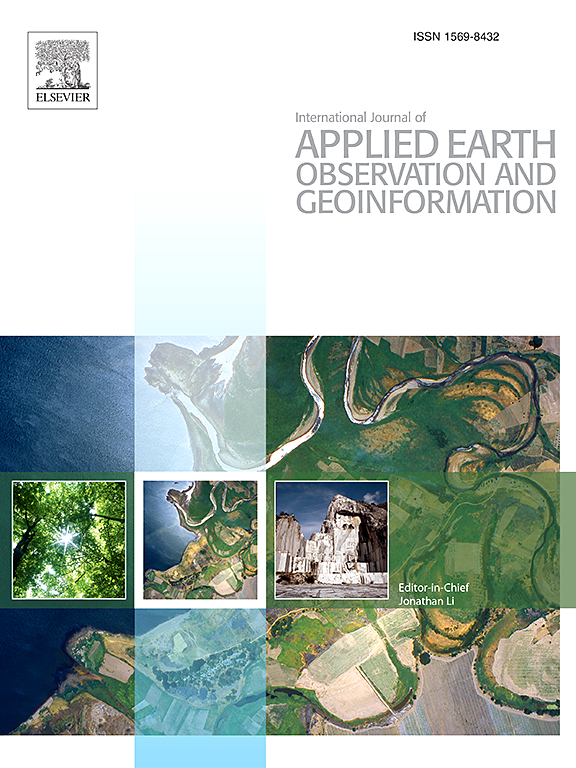Satellite-based flood mapping of coastal floods: The Senegal River estuary study case
IF 7.6
Q1 REMOTE SENSING
International journal of applied earth observation and geoinformation : ITC journal
Pub Date : 2025-03-12
DOI:10.1016/j.jag.2025.104476
引用次数: 0
Abstract
This study employs an integrated approach, combining remote sensing and numerical modelling techniques, to characterize flood-prone regions resulting from the combined effects of extreme river water elevations and long-term sea-level rise in the Senegal River Estuary. Four different case scenarios of hydrodynamic conditions have been investigated to provide a quantitative assessment of flooding. Simultaneously, a Land Type classification using machine learning techniques has been conducted. Subsequently, the resulting land type map has been integrated with flood mapping simulations obtaining the different land types impacted by flood dynamics. The analysis shows that the buildings classification is the most impacted followed by vegetation and roads. This study highlights the flood-affected areas at a district level, offering relevant understanding for the development of effective adaptation strategies, disaster planning, adjusting policies with scientific knowledge, and supporting adaptive governance in the Senegal River Estuary.
求助全文
约1分钟内获得全文
求助全文
来源期刊

International journal of applied earth observation and geoinformation : ITC journal
Global and Planetary Change, Management, Monitoring, Policy and Law, Earth-Surface Processes, Computers in Earth Sciences
CiteScore
12.00
自引率
0.00%
发文量
0
审稿时长
77 days
期刊介绍:
The International Journal of Applied Earth Observation and Geoinformation publishes original papers that utilize earth observation data for natural resource and environmental inventory and management. These data primarily originate from remote sensing platforms, including satellites and aircraft, supplemented by surface and subsurface measurements. Addressing natural resources such as forests, agricultural land, soils, and water, as well as environmental concerns like biodiversity, land degradation, and hazards, the journal explores conceptual and data-driven approaches. It covers geoinformation themes like capturing, databasing, visualization, interpretation, data quality, and spatial uncertainty.
 求助内容:
求助内容: 应助结果提醒方式:
应助结果提醒方式:


